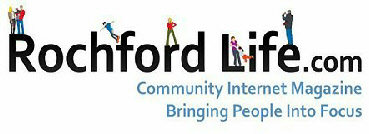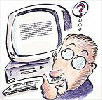

Make a point of visiting us weekly!
Knowing the Language (Part 2: E to R)
This page continues the A-Z of computing terms
This page continues the A-
The World of Computing
Bits and bytes from computing
Page TWO
Page TWO

Edge
Wireless service that delivers faster data rates to enabled mobile phones
Wireless service that delivers faster data rates to enabled mobile phones
Ethernet
A type of computer network developed by Xerox in the 1970s, allowing a number of PCs to be linked together and communicate with one another.
Firewall
Software or hardware that stops unauthorised access to your computer via the internet or over a network.
Flash
An application used to create high-
Flash Drive
Small portable device to store and transfer data
Small portable device to store and transfer data
.GIF (GIF = Graphics Interchange Format)
A commonly used graphics file format popular for images displayed on web-
GHz – Gigahertz
The measure of a computer processor’s speed
The measure of a computer processor’s speed
HD – High Definition
A TV picture with higher resolution than normal
HDMI
A multi-media high definition interface, a cable that carries both HD video and sound
A TV picture with higher resolution than normal
HDMI
A multi-
HD ready
'HD ready' is a labelling scheme introduced by the TV manufacturers' organisation, the European Industry Association for Information Systems (EICTA). The label means the TV has the minimum screen resolution (at least 1280x720) and digital sockets (HDMI or DVI) to receive and display an HD picture.
HTML
Hypertext Markup Language – the language used to create web pages
Hyperlink
A clickable link on a web page or in a document that takes you to elsewhere, like to another website or a later page.
Icon
A small image used by Windows or Apple to identify a file
Intranet
Has the look and feel of an internet website, and can be explored with a browser such as Internet Explorer or Netscape Navigator. Unlike the web, access is limited to pages on a company's internal network.
ISP
Internet Service Provider – a company that provides you with an Internet connection
JPEG (or JPG)
A common format for image files. JPEG images are compressed and the small file size makes them ideal for web pages. Joint Photographic Experts Group
Lan
Local Area Network – describes two or more computers connected with the ability to share resources, such as printers etc.
Memory (or RAM)
Random Access Memory is the computer's temporary storage area, measured in megabytes (Mb). Anything written to memory will be lost when the power is switched off. Windows 95 needs at least 16Mb to work properly, and double that again to work smoothly. For Windows 98 and beyond, consider 64Mb as a realistic minimum.
MP3
A standard for compressing digital audio. The sound quality of an MP3 file is close to that CD audio but requires only a fraction of the storage space.
MP4
A common video file format that compresses the data
A common video file format that compresses the data
MPEG
Stands for Motion Picture Experts Group, and describes a method of compressing digital video. MPEG-
Netbook
A smaller type of laptop designed for portability over power, probably with solid state memory rather than mechanical drive.
A smaller type of laptop designed for portability over power, probably with solid state memory rather than mechanical drive.
Portable Document Format. A file format developed by Adobe that allows formatted pages of text and graphics to be viewed and printed correctly on a variety of machines, without the original author having to worry about the recipients. PDF pages created with Adobe Acrobat need to be read with the free Acrobat Reader application.
Peripherals
Add on hardware to your computer, such as screen, mouse, keyboard, printer, external hard drive, scanner etc.
Podcast
A digital audio file
A digital audio file
RAM
Random Access Memory. The computer's working area, used for data storage while the PC is switched on. Its capacity is measured in megabytes (Mb): the more memory your PC has, the more things it can process simultaneously and the faster it will seem. Note that any information in RAM will be lost when the power is switched off.
Registry
A file integrated into Windows that stores information on all hardware and software installed on your computer.
Resolution
The amount of detail of an image on screen or in print, usually measured in pixels
The amount of detail of an image on screen or in print, usually measured in pixels